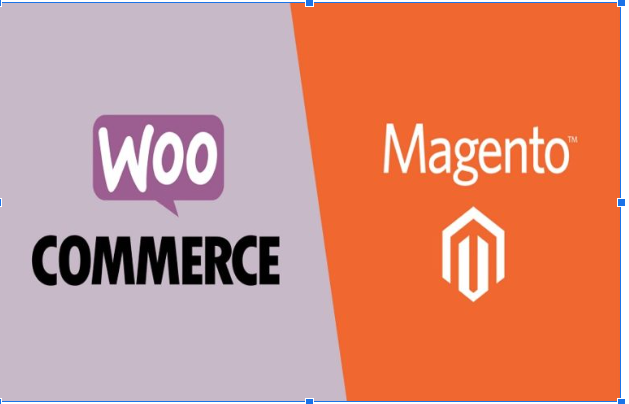
Of all the business decisions, the most crucial is selecting a suitable e-commerce platform, and its future running, scalability, and expansion. The choice usually comes down to two of the most advanced solutions: a flexible, open-source WordPress plug-in and a powerful, stand-alone enterprise solution. It's not a question of picking one, single best platform for everybody, but of finding the best for your unique business size, technical capability, and strategic plans. Being aware of the underlying variation in their structure, cost, and management requirements is vital. The WooCommerce vs Magento decision is therefore one of whether you appreciate straightforward, easy-to-use simplicity and content integration, or if you require nothing less than industry-leading scalability and features baked in for high-end, high-volume sales processes.
WooCommerce is free, but there are involved costs in hosting, security, and premium extensions that amount to something, so it's a low upfront cost. Magento (Open Source) is also free, but technical needs drive more expensive hosting, developer time to install and tailor, and more frequent maintenance costs. Although less expensive for small businesses than WooCommerce, Magento's total cost of ownership is justified for bigger businesses that require its full-featured, native capabilities and can leverage its strength to achieve significant revenue gains.
WooCommerce is renowned for its ease, merging perfectly with the classy WordPress dashboard. General WordPress operations users can manage products, orders, and content without special training. Magento is tougher to learn. Its powerful admin panel is feature-laden but complex, taking longer and technical expertise to learn and utilise to maximum benefit. It is not suitable for a non-technical user to manage themselves, sometimes even necessitating a particular manager or developer to look after its advanced settings and backend operations.
WooCommerce suits small to medium-sized shops but performs very well on large product catalogues (10,000+) with the reliance on quality hosting and optimisation. It can scale, but generally requires significant upgrades. Magento has been built from the ground up to be scalable. It supports massive product catalogues, massive concurrent traffic, and complex operations without sacrificing performance. It is the complete package for companies that have ambitions for high growth or are already in an enterprise-based operation.
WooCommerce has core e-commerce features built in. To get enhanced functions like advanced promotions, advanced reporting, or B2B capabilities, you have to install extensions. Magento has a rich repository of deep native capabilities like advanced marketing ability, customer segmentation, and advanced B2B functionality. This reduces the initial reliance on extensions for advanced purposes, providing a deeper base that can be customised towards specialised business logic.
Both sites are SEO-enabled to a great extent. WooCommerce benefits from the unparalleled SEO strength of WordPress and plug-ins like Yoast SEO, where there's superior on-page optimisation and content control. Magento is also very strong, with native SEO features where heavy metadata URL and schema markup can be managed. Its architecture is extremely good for technical SEO at scale. The choice is nuance-driven: WooCommerce offers content-focused SEO, while Magento has technically advanced site control.
Security in WooCommerce is largely under your control. You must update WordPress, the theme, and all of your plugins regularly with care to seal vulnerabilities. Magento requires security patching ahead of time, but possesses enterprise-class architecture that is inherently secure. As it is sophisticated, however, security maintenance would usually require a developer. For both, having an outsourced managed hosting provider that offers advanced security features is strongly advised to minimise the risks as well as meet, especially for processing sensitive customer data.
WooCommerce supports an enormous payment gateway out of the box with free and paid plugins, so installing popular ones is quite easy. Multi-currency support typically requires an additional plugin. Magento has native support for multiple currencies and payment gateways, and its scalability benefits for building complex payment flows. It is typically implemented on global stores that need advanced price and tax calculations by geographies out of the box, without third-party extensions at first glance.
WooCommerce is most suitable for small to medium businesses, content sites appending a shop, and companies that want a clean, uncomplicated system. It's well-suited for B2C models with uncomplicated product lines. Magento is suitable for medium to large businesses, businesses with intricate catalogues (such as configurable products), high traffic numbers, and businesses with a B2B or hybrid model. Its potential is better utilised by companies possessing technical staff who can deal with and tailor it properly.
The decision between Magento and WooCommerce is simply a case of finding a platform to match the scale of your business operation, technical expertise, and growth path. WooCommerce offers a cheap, open, and highly flexible solution that is well adapted to businesses that exist within the WordPress universe or have simpler sales paradigms.
Magento, however, provides a staunch, enterprise-class platform with scope for depth of customisation, high-traffic potential, and complexity that its higher learning curve and increased management overhead merit. No one platform is for everybody; the superior platform is the one best suited to your particular business model and one that can grow with your future endeavours.

This post has been published by the admin of our website, responsible for content management, quality checks, and providing valuable information to our users.